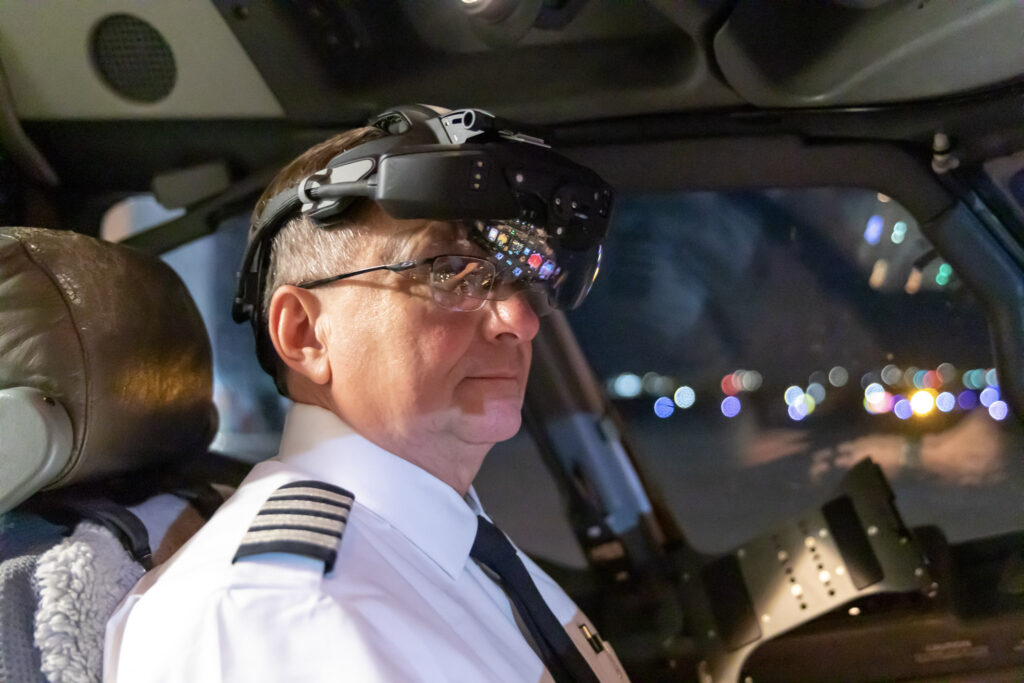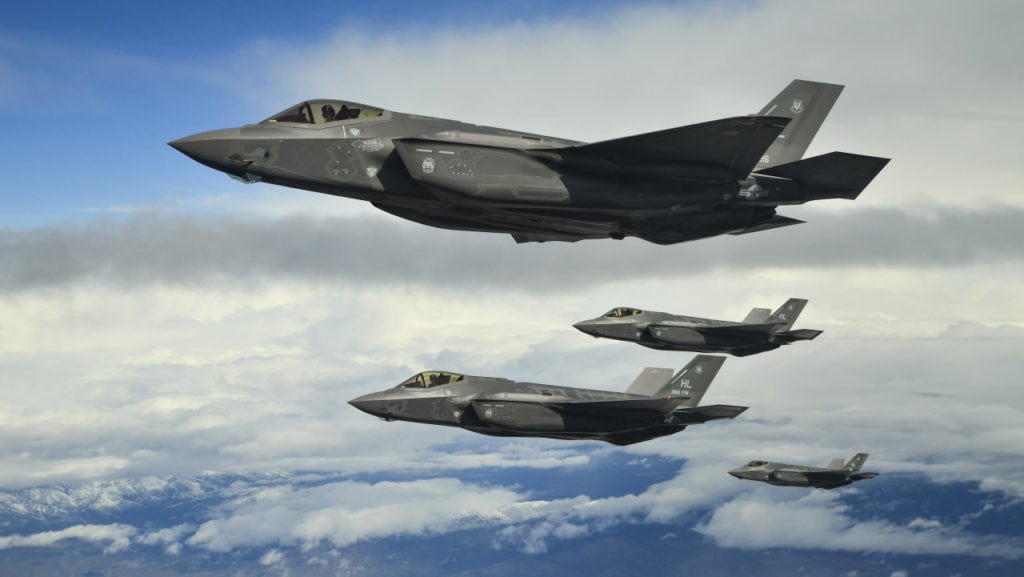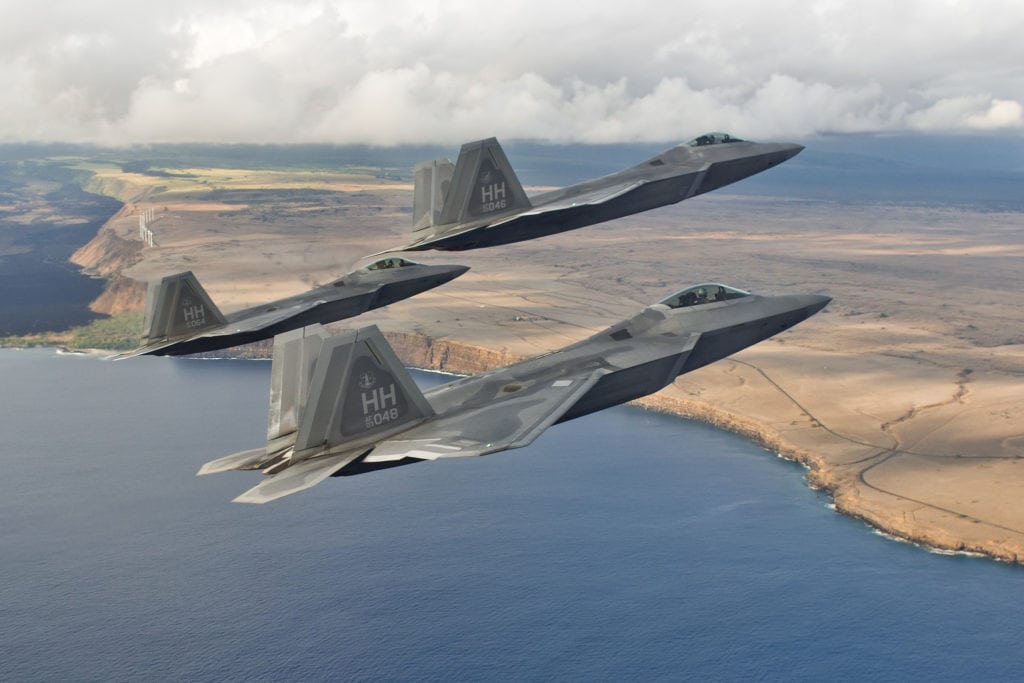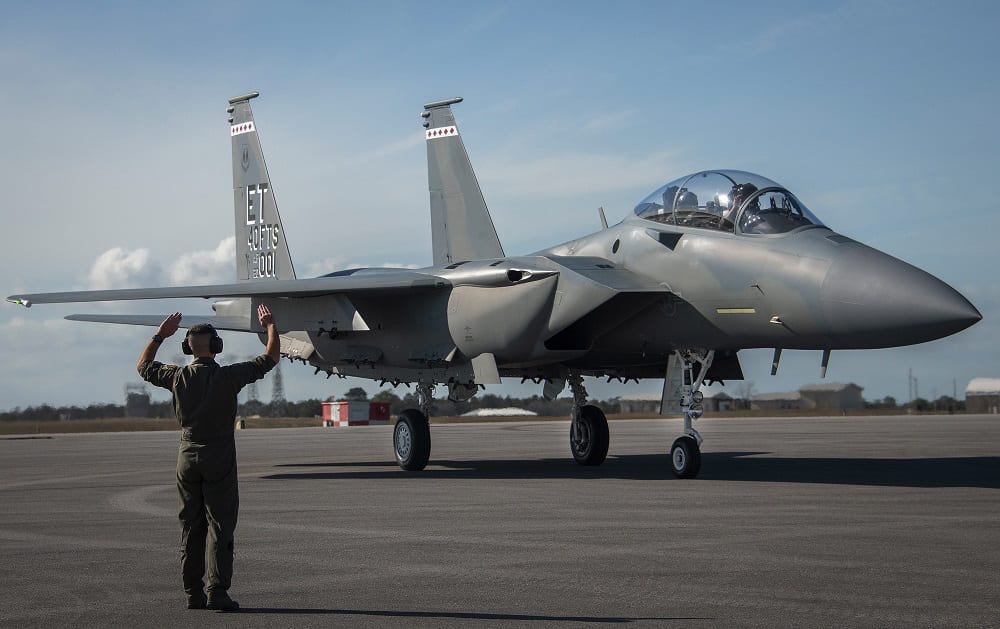
With the arrival of the multi-orbit era and airlines making decisions on how they will use satellite connectivity going forward, the market for in-flight connectivity (IFC) has entered an exciting phase. The past year has seen a flurry of IFC deals with satellite operators as airlines invest in fleet upgrades, new aircraft, and passenger experience.
In this feature, rather than talking to the satellite community, Via Satellite spoke to four airlines about their next-generation connectivity plans and how they might invest in satellite to bring those plans into reality.
Alaska Airlines
Alaska Airlines is a major U.S. airline that carries over 44 million passengers a year. Like many airlines, it is keenly evaluating and assessing the market, as more satellite options become apparent. David Scotland, In-Flight Experience and Product Technology Director for Alaska Airlines, tells Via Satellite that while Starlink has the first mover advantage in Low-Earth Orbit (LEO), and the product is compelling, it doesn’t necessarily mean Starlink will dominate this market.
“We’ve seen this before with Gogo’s original air-to-ground (ATG) system and then Viasat HTS. Competitors catch up and sometimes eclipse the first mover. Starlink is new to IFC and we’ve seen a lot of maturity in how they approach airlines both from technical and business perspectives,” Scotland says. “I trust they’ll continue to mature over time and we’re eager to watch them evolve as they influence the whole industry to deliver better results for guests.”
For airlines, LEO has changed the dynamics of the market. Scotland says LEO is “incredibly appealing” for Alaska Airlines and that it is one of the reasons it decided to work with Intelsat’s hybrid LEO and Geostationary Orbit (GEO) regional jets, in a deal announced in January 2023.
In terms of what is next, Scotland adds, “We’re assessing options for portions of our mainline fleet now and choosing the right antenna technology is critical in our decision making. There’s a lot of development in this space, but few are in service today, so the jury is still out as to reliability.”
One of the key aspects to a successful IFC strategy is having the right equipment. Expanding on the topic of electronically steered antenna (ESA) technology, Scotland says, “ESAs are what we’ve all been wanting from the start. Their smaller size and lack of moving parts are compelling selling points. We’re going to install a first-generation system on our regional jets but we know second, and third-generation ESAs are only a few years off.”
He says Alaska Airlines is sensitive to how fast consumer technology evolves and supplier roadmaps need a view into upgradability. “Whether it’s a new wireless standard requiring a hardware upgrade, or new internet app driving demand for bandwidth to the aircraft and guest, this puts pressure on suppliers to be agile and offer upgrade paths with limited aircraft downtime,” Scotland adds.
How can the satellite industry improve its dealings with the airline community? Scotland says the answer is in transparency.
“One area where the [satellite] community could improve is in the provision of greater transparency into the quality of service offered in different geographies, on different days, and on different space assets,” he says. “This will be critical to understanding what our guests are actually getting in terms of experience. In turn, we can help operators plan for seasonal changes that could impact usage — whether it be due to guest demographics or flight schedules.”
In terms of where the market is going and what Alaska Airlines is influenced by, he says he is more interested in the IFC supplier side than the airline side. He cites some examples.
“On the airline front, Delta clearly disrupted the market with free, but IFC suppliers Intelsat and Anuvu have made huge strides in the past several years to upgrade their service. Intelsat was always good, but their network is even better now. Anuvu’s service on Southwest is a night and day difference from just a few years ago,” he says. “Additionally, Panasonic deserves credit for improving the most on the global scene. I’d say the most intriguing thing to me personally is the Airbus HBCPlus program. An agnostic antenna that we can shop service around with is extremely interesting.”
Iberia
Iberia is one of the largest European airlines and with nearly 170 aircraft in service and flights to almost 140 cities across the world. IFC has become a vital component of the airline’s strategy.
Iberia Director of Customer Experience Melanie Berry tells Via Satellite that the airline now has 95 percent of its fleet connected. Berry does not see LEO technology as a game-changer, and says antenna technology is more critical.
“I think the real ‘game changer’ will be agnostic antennas, because then we will have the same opportunity we do have at home. If we don’t like the option we have with option A, we go with option B,” she says. “We don’t have that right now. We make a commitment to an aircraft and it is the hardware that belongs with that provider. It is very cost-prohibitive [to change providers]. There is a lot of work to do on the aircraft. I think the development of agnostic antennas is going to give us all a lot more flexibility and a lot more choice, and maybe things will start to move a lot quicker once we get to this point.”
Iberia, like a number of airlines, has high expectations of the satellite industry. Berry is not the first to talk about more flexible antennas, but there are other challenges that she thinks airlines face. Berry says her biggest frustration and the thing that needs to change more than anything is how service level agreements (SLAs) are managed.
“In the past, it has been if there is a heartbeat to the aircraft, then the aircraft is connected, we are doing our job. My measure is — if nobody is connected, regardless if there is a heartbeat to the aircraft, there is a problem. We get lulled into a sense of security that is not correct. The reports will say the service level was 100 percent, so why couldn’t X percent of our customers connect? Antennas, yes, are an issue. We really need to rethink SLAs and that we are measuring the right things so we can improve things for the future.”
While better SLAs and agnostic antennas are part of Berry’s wishlist, the airline has made strong progress with its IFC strategy in recent times. She believes the future is about personalization and digitalization. In order to do this more effectively, Berry says the airline needs connected aircraft, crew, and suppliers. Interestingly, thanks to customer feedback, the airline is finding success using WhatsApp as a way of connecting with customers.
The airline has been using WhatsApp as a communication channel for customers since 2019. Berry describes it as a “work in progress,” but it’s a big part of the company’s personalization strategy.
“It is almost like a digital concierge. Customers can use WhatsApp to check in, obtain their boarding pass and receive flight notifications, among other options,” Berry says. “The feedback we have had is amazing. For me, one of the most rewarding moments was when I was walking in Madrid airport at 5 a.m., and this couple behind us, the man talked about the Iberia WhatsApp service. He wanted his wife to try it, as he thought it was fantastic.”
Despite a lot of consolidation and new players entering the market, Berry does not expect one player on the satellite side to dominate it. She says, “We have three different connectivity providers right now. All of them have made significant improvements over the last few years. We are continuing to work towards what that future looks like. I think Starlink is definitely interesting, but there are lots of interesting things going on in the market. I am not sure they [Starlink] will dominate it. I think there is room for everybody.”
However, in terms of what the next big decisions are for Iberia, it comes back to antennas. Berry says, “We are at a moment where we are trying to understand the life of antennas because we are starting to see a few more failing. So, like everything, there is a specific life. We are looking at when is the right moment to start thinking about changing them. Agnostic antennas aren’t quite there yet. How ready is the world for change?”
Icelandair
While Iceland may not be the biggest country in Europe, Icelandair has long been one of the pioneers in IFC, and has a fleet of just under 50 aircraft. Recently, the company decided to work with Viasat on the next phase of its IFC strategy.
Helga Huld Bjarnadottir, director of Customer Experience and Loyalty for Icelandair, tells Via Satellite the thinking behind choosing Viasat for its Wi-Fi services on all Icelandair 737 MAX aircraft. This deal was announced in March this year. Bjarnadottir recounts how the airline previously worked with Anuvu when it introduced Wi-Fi on the 757 fleet. When the company looked to equip its new Airbus fleet, she says they went through an evaluation of all options, including LEO providers like Starlink.
“In our assessment, we considered various factors such as cost, technological development, and bandwidth capabilities. Ultimately, we found that Viasat offered the best combination of performance, reliability, and cost-effectiveness for our needs,” she says.
Like many airlines, frustrations have come less from the service offerings from customers, and more from the potential to switch providers should the need arise. Bjarnadottir says, “When you have started a partnership with a Wi-Fi provider, it is a long-term relationship since the equipment is different between companies and it is complicated to replace. It is no easy task to move to another provider if you are unhappy with the services. The key is to do thorough research and pick a partner that shares your vision.”
Bjarnadottir believes the IFC market has been evolving with various trends shaping its landscape. From her perspective, she believes it is crucial for each airline to approach this market uniquely, considering their specific needs and objectives. Bjarnadottir talks of personalization standing out as a particular trend as airlines navigate how to effectively integrate it into their strategies. “The key question revolves around the extent to which personalization is incorporated and how it enhances the overall passenger experience. As the market continues to evolve, finding the right balance between innovation and personalized service will be essential for success,” she adds.
Icelandair’s primary focus is on ensuring the success of its business strategy in terms of its cost model, customer satisfaction, and delivering a seamless experience. It is consistently evaluating its strategy, seeking opportunities for improvement and development that would enhance ROI.
While Delta Air Lines made the choice to offer Wi-Fi for free, Bjarnadottir does not see Icelandair taking this same route.
“It’s certainly a noteworthy move. We’re carefully analyzing how this aligns with our own objectives and assessing its potential impact on ROI for Icelandair,” she says. “While we remain open to exploring all options, we don’t foresee immediate changes mirroring Delta’s approach.”
The airline’s focus has been primarily on ramping up its operations after the challenges posed by the COVID-19 pandemic. It has been working diligently to increase its flight schedules and return to sustainable operation levels. The airline is approaching delivery of brand-new Airbus A321 LRs later this year.
“We have been designing the interior as well as IFE and IFC systems that will offer even better customer experience,” Bjarnadottir says. “We have been working on ensuring consistency in IFC providers across our aircraft, with that we anticipate greater success and satisfaction among our passengers. This approach aligns with our commitment to providing a seamless and enhanced travel experience, further solidifying Icelandair’s position.”
Aeromexico
Via Satellite interviewed Aeromexico just over seven years ago when it was starting to ramp up its IFC plans. The Latin American airline was one of the early movers in the IFC space. The airline’s strategy right now is to have the entire fleet connected, including its regional aircraft, by the end of 2026, and to continue migrating to an experience that replicates the experience on the ground.
Alejandro Ochoa, In-Flight Technology manager for Aeromexico, believes LEO technology will be a game changer and will generate more competition, making overall costs more affordable and accessible to any passenger, “to the extent that it will be the standard of tomorrow as it is today to have a drink on board.”
He says Starlink could come to dominate the market with its technology and coverage. But, there are issues when looking to partner with a company like Starlink.
“They have frictionless connectivity, this means there is no portal. It could be an issue for some airlines such as Aeromexico, because we want to have contact with the passenger, in order to generate revenue and enhance the experience. This could be a major obstacle,” he says.
One of the main challenges for Aeromexico is to improve its coverage in Asia and South America, where the airline has some key routes. “This is something that the GEO satellite community has to improve, and in case there is no improvement in coverage, you have to look at a mix of LEO and GEO satellites.”
For example, some of Aeromexico’s most important and lucrative routes are to Japan, and South Korea and Ochoa admits there have been “issues” with the coverage. “Improving coverage is super important. It has been difficult to implement a successful Wi-Fi program due to certifications, regulations and technology,” he says.
Aeromexico currently offers free Wi-Fi to business class passengers on our 787 aircraft and is exploring other models, including sponsorship.
Ochoa says the largest challenge is getting the infrastructure in place. “We have had different providers. We need to make sure we can provide a seamless experience between different providers. We know that connectivity is a differentiator in the aviation industry,” he says.
Ochoa is optimistic about the overall state of the IFC market. He believes it is set for robust growth, fueled by technological advancements, rising passenger demand, and strategic industry collaborations. The adoption of satellite-based solutions, particularly LEO and hybrid GEO and LEO satellite constellations, is enhancing connectivity quality and reliability.
“As airlines increasingly view in-flight connectivity as a competitive advantage and a potential revenue stream, they are exploring various business models, including freemium and sponsored services,” he says. “Overall, the IFC market’s future looks promising, with continuous innovation and expansion.”
A version of this story originally appeared in affiliate publication Via Satellite.
The post 4 Airlines Share Their Perspectives on the IFC Market appeared first on Avionics International.
—————
Boost Internet Speed–
Free Business Hosting–
Free Email Account–
Dropcatch–
Free Secure Email–
Secure Email–
Cheap VOIP Calls–
Free Hosting–
Boost Inflight Wifi–
Premium Domains–
Free Domains











